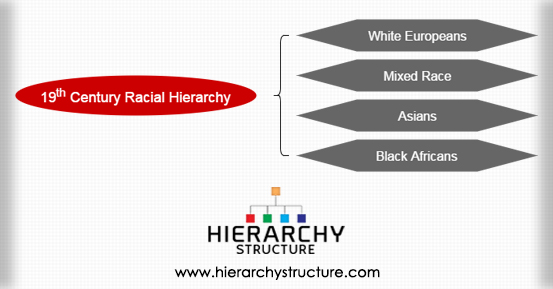The 19th Century has seen the most amount of racism till date. It was a period which later triggered a lot of revolutions, Renaissance and public movements and revolts against inequality. This period has seen the maximum racism as the Whites were at the top and the Blacks were exploited beyond limits. It has been one of the darkest periods in the history for people of inferior races. The hierarchy of races in the 19th century is given below:

White Europeans
The Whites, indeed the most superior considered race in the entire world has dominated the hierarchy the most in the 19th century, as they were responsible for atrocities on the lower races. White European racial were the once who were holding a lot of wealth and power and also went on to colonize many countries in the world and ruling them. The feudal lords and other rulers were also Whites, who considered themselves as the most blessed race.
Mixed race
The Mixed race people were those whose parents or ancestors were of two different races. Mixed race people have features of two different races and hence, they were not considered totally ‘pure’ or the most superior race. They often comprised of businessmen or small merchants.
Asians
The Asians were holding this position in the racial hierarchy since a long time and are still holding it. Though they were concentrating a lot of wealth in the 19th century, they were classified as an inferior race because of their skin color and their wealth was not considered as their sign of superiority at all. They were called as brown people because of their skin color. Most of the Asian countries were ruled by the Europeans, considering them as inferior races.
Black Africans
Black Africans racial, originally from the continent of Africa was the most exploited and financially poor race of the 19th century. They were traded as slaves, put into forced labour and tortured beyond limits. They were degraded as they were constantly humiliated in public, not allowed to enter the places where the ‘Whites’ would go or not allowed to get access to basic rights and equal payment wages. Hey were often asked to do work like cleaning public toilets, work at mines, cleaning the streets, etc. They were not even allowed to get educated at places where the Whites would. Hence, they were in the most pitiful situation in the 19th century.
